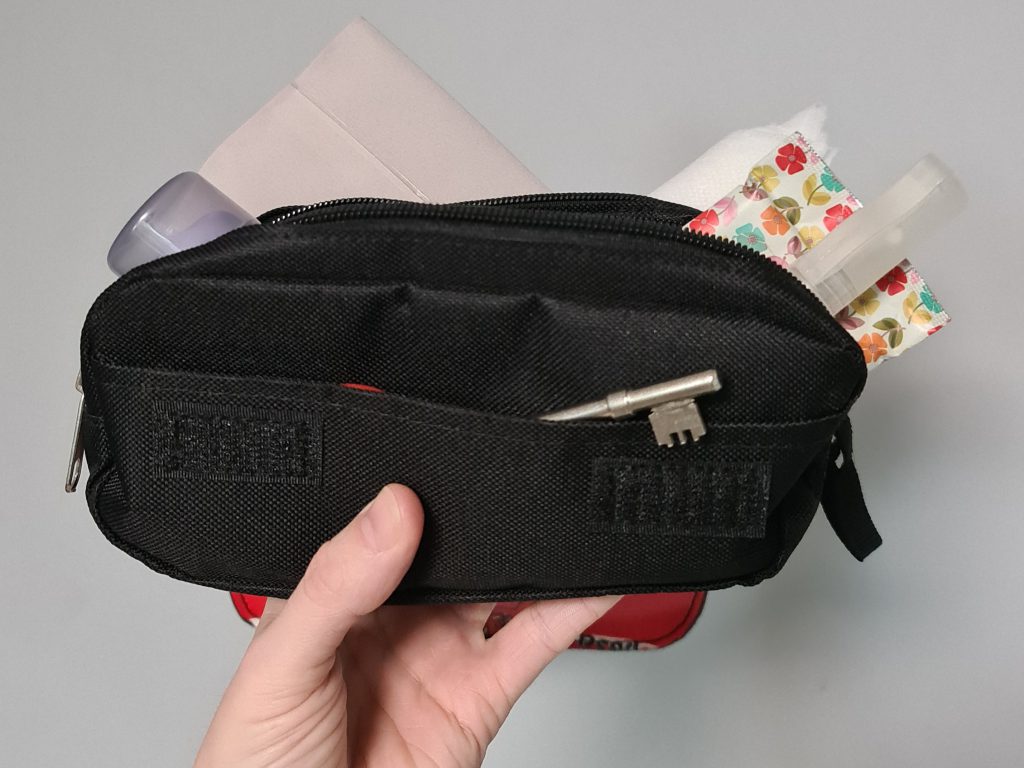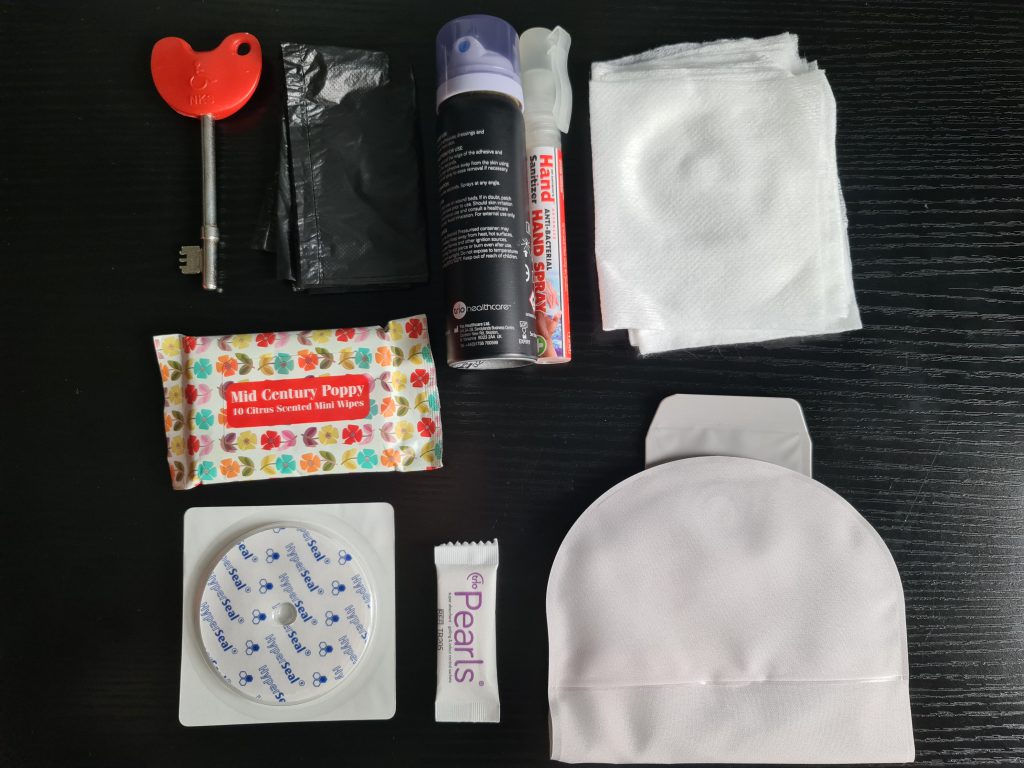
I’d recommend anyone with a stoma carry an emergency change kit when they’re out and about, “just in case”.
I often say how safe and secure my current stoma bag makes me feel, so I don’t generally worry about experiencing leaks away from home. However, faults in bags can and do happen. Accidents can and do happen. It’s always better to be prepared for it!
My last emergency ostomy bag change
I actually had to do an emergency change in Bradford due to a manufacturing fault in my bag. I’m sure you can imagine how thankful I was that I had an emergency bag change kit with me when I found myself in this situation, a 90-minute drive from home! Oh, we also didn’t actually have the car. We were in Bradford because we took the car to be remapped by a highly recommended professional.
I’d gone to the toilet and noticed a small poo spot on my underlayer. Fortunately, it was only a minor leak, and I’d only got that tiny spot on my vest and underwear. We were in a restaurant when I noticed, so I was lucky enough to have a fully kitted out toilet to sort myself out in. I changed my bag and went at my clothing with soap, water, and dry wipes. That experience led to me adding some mini wet wipes and hand sanitiser to my emergency kit, on the off chance anything similar happened when I was not in a fully kitted out toilet! I hadn’t included them before because I’d assumed I’d be changing in a public toilet, where there would be a sink to wash my hands after. I’d not actually considered that I might have to clean my clothing!
I checked the rest of my bags when I got home and only found one other with the same fault. If you find yourself with a faulty batch of bags, let the manufacturer know. There’s usually a code on the box that you can share with them.
What to put in an emergency bag change kit
I carry the kit in my bag everywhere I go. Some people might find it useful to have a few made up to keep in different places such as in the car or at work.
I actually use pencil cases, but any little bag that will fit what you need will do! Here’s what to include:
- RADAR key (allows access to RADAR accessible public toilets)
- Waste disposal bag
- Adhesive remover (if you use it)
- Dry wipes
- Pre-cut bag
- Any additional items such as seals, gelling sachets, paste etc.
- Wet wipes
- Hand sanitiser

If you do often find yourself in places where there are no toilets, you may need additions in your kit such as extra waste disposal bags (double bag and dispose when you next come across a bin) if you’re in the middle of nowhere.
That’s it! I hope you’ve found this post useful. If you think there’s anything I’ve missed, or you’d just like to chat, I’m all over social media (@sahara88uk).
We hope you enjoyed this article from our guest blogger. They are expressing their views or knowledge on a topic because of their experience and background. Some of the opinions expressed may not reflect the views of Fittleworth or your NHS professional.
It goes without saying, but this is not clinical advice. Each person will have an individual set of medical factors to consider. So please do not to make significant changes to your diet, exercise or treatments before consulting with an NHS professional.
Sahara was admitted to hospital and diagnosed with Ulcerative Colitis at the age of 19, after just two weeks of being incredibly unwell. One week later, she had emergency surgery to remove her colon and rectum, and had her first ileostomy. A turbulent journey followed; a multitude of treatments, complications, seven surgeries, a failed J-Pouch, and three ileostomies later, she is living with a permanent stoma and is a pro-active IBD and ostomy advocate.

Sahara Fleetwood Beresford – Ostomy Blogger
Sahara joined the online IBD and ostomy community in 2014, and it very quickly became apparent to her that whilst awareness is important, even more important than that is providing support to others as they navigate the stormy waters of life with IBD, or an ostomy.
She runs #IBDSuperHeroes fundraising and awareness campaign, and the Facebook support group. She is a blogger for InflammatortyBowelDisease.net and an IBD Patient Consultant for merakoi – bridging the gap between patients and healthcare. She gets involved with research whenever she can, and is a volunteer for Cure Crohn’s Colitis, where she donates her time and expertise in social media marketing and content creation
